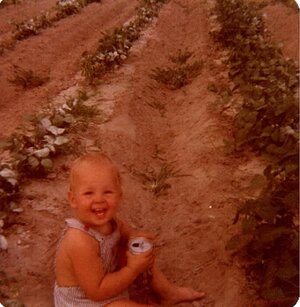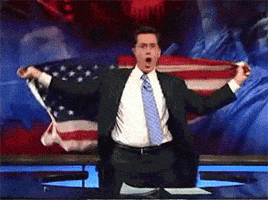Some thoughts on the Hendrix National Anthem -- Patriotism and Protest
Glimpses of the faces in the crowd
The performance at Woodstock below
Patriotism or protest? Army vet Jimi Hendrix had the 'most electrifying moment' at Woodstock By SEAN MOORES STARS AND STRIPES • August 15, 2019
Read more at: https://www.stripes.com/special-reports/vietnam-stories/1969/patriotism-or-protest-army-vet-jimi-hendrix-had-the-most-electrifying-moment-at-woodstock-1.594315
Source - Stars and Stripes
On Aug. 18, 1969, former soldier Jimi Hendrix, resplendent in bright red headband, white fringed shirt and bell-bottom blue jeans, unfurled what has been called the cultural moment of the 1960s when he played an incendiary instrumental version of “The Star-Spangled Banner” for remnants of the crowd at the Woodstock Music & Art Fair in Bethel, N.Y. Hendrix died 13 months later, shortly after his amplified anthem received widespread exposure in the Academy Award-winning “Woodstock” documentary. He was 27. His legacy as a guitar god is unassailable, but 50 years after Woodstock a question remains: Was Hendrix’s performance of “The Star-Spangled Banner” patriotism, or was it protest? The interpretation lies with the listener. At first, Hendrix adhered to the melody of the song, which had only been the official U.S. national anthem for 38 years. By the time he got to “the rockets’ red glare,” though, Hendrix unleashed the full force of his white Fender Stratocaster. The squeals of amplifier feedback and dive-bombing on his electric guitar’s vibrato bar have been said to evoke combat, fighter jets, artillery, ambulance sirens and, perhaps, riots in the streets. It also included a segue into taps, the traditional bugle call played at military funerals. Popular interpretation, rooted in the mythology of the ’60s, favors protest. It was a complicated time in American history. National pride swelled a month earlier when Neil Armstrong walked on the moon, but there was widespread conflict. Civil rights struggles and changing sexual politics made frequent headlines, as did the Vietnam War. As Hendrix performed that 3-minute, 46-second version of the national anthem, the war raged half a world away. More than 35,000 American troops had been killed. “It was the most electrifying moment of Woodstock, and it was probably the single greatest moment of the ’60s,” New York Post pop critic Al Aronowitz wrote. “You finally heard what that song was about, that you can love your country, but hate the government.” (Francis Scott Key, whose patriotic poem written in 1814 later became “The Star-Spangled Banner,” might have disagreed.) Noted cultural critic Greil Marcus, who got his start reviewing music for Rolling Stone magazine in the ‘60s, allowed for a more open-ended interpretation in Clara Bingham’s 2016 book “Witness to the Revolution: Radicals, Resisters, Vets, Hippies, and the Year America Lost Its Mind and Found Its Soul.” “I always think of it as the greatest protest song ever, but it’s not just a protest song, it’s an incredibly layered, ambiguous piece of music,” Marcus said. “To take the national anthem and distort it … it was taken as an attack on the United States for its crimes in Vietnam, which is not an unreasonable way to hear it, but it’s also a great piece of music. No art that has its own integrity is ever going to be about one thing or be one thing.” Addressing the anthem Ten months before Woodstock, Jose Feliciano proved that changing the national anthem could bring a backlash. The blind singer-guitarist created a stir when he turned in a soulful rendition of “The Star-Spangled Banner” more akin to a folk song than a formal performance before Game 5 of the 1968 World Series in Detroit. Many fans were outraged, and even the Tigers and Cardinals players were divided. Feliciano insisted his intent was patriotic.
“I just do my thing, what I feel,” Feliciano told The Associated Press. “I was afraid people would misconstrue it and say I’m making fun of it. But I’m not. It’s the way I feel.” The heat blew over. RCA Records released Feliciano’s version of “The Star-Spangled Banner” as a single that reached the Top 50. The controversy reignited with Hendrix. Even in the pre-Twitter era, Hendrix was hounded to explain his motivations.
At a news conference a few weeks after Woodstock, Hendrix said, “We’re all Americans … it was like ‘Go, America!’ … We play it the way the air is in America today. The air is slightly static, see.” He certainly harbored no ill will toward U.S. troops. Earlier in his Woodstock set, Hendrix dedicated “Izabella” to “maybe a soldier in the Army, singing’ about his old lady that he dreams about and humpin’ a machine gun instead.” If Hendrix was protesting the national anthem or U.S. involvement in Vietnam, he never said so.
On Sept. 9, Hendrix again addressed “The Star-Spangled Banner” on “The Dick Cavett Show.” “What was the controversy about the national anthem and the way you played it?” Cavett asked Hendrix. “I don’t know, man,” he replied. “All I did was play it. I’m American, so I played it. I used to have to sing it in school, they made me sing it in school, so … it was a flashback.” Cavett, addressing the audience, said, “This man was in the 101st Airborne, so when you write your nasty letters in …” “Nasty letters?” Hendrix asked. “Well, when you mention the national anthem and talk about playing it in any unorthodox way,” Cavett said. “you immediately get a guaranteed percentage of hate mail from people who say, ‘How dare …’.” “That’s not unorthodox,” Hendrix said, cutting off his host. “That’s not unorthodox.” “It isn’t unorthodox?” Cavett asked. “No, no. I thought it was beautiful. But there you go, you know?” Hendrix said, to applause from the audience."
Continued at link...


